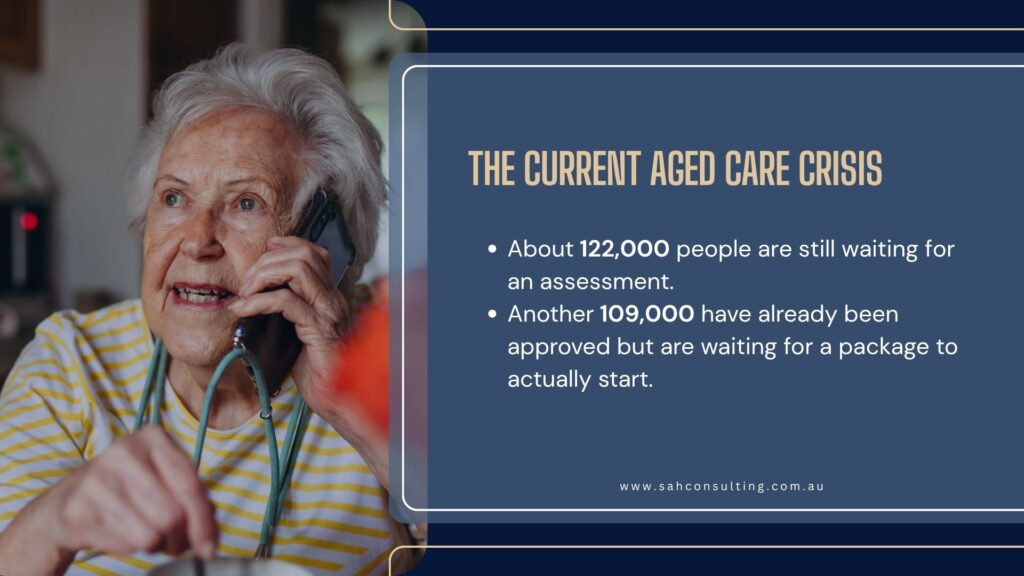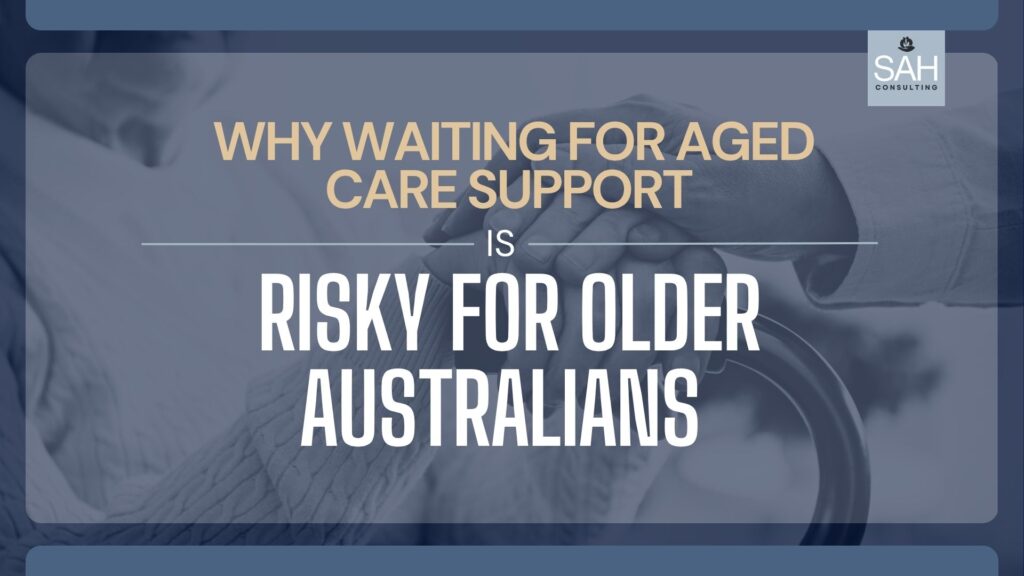Australia’s Support at Home program was designed to give older Australians the help they need to stay safe, independent, and comfortable at home. From meal support to showering assistance, medication management, and mobility help, the program should be a lifeline. But right now, it’s struggling under heavy demand. A Senate inquiry has warned that waiting lists are so long they could actually be dangerous, highlighting a growing aged care crisis that’s putting older Australians at risk.
The Current Aged Care Crisis

Right now, more than 200,000 older Australians are stuck on waiting lists for support. Behind that number are two separate bottlenecks:
- About 122,000 people are still waiting for an assessment.
- Another 109,000 have already been approved but are waiting for a package to actually start.
That’s not just a statistic. It means real people are missing out on the daily essentials, from help with meals and medication to bathing and getting around safely. Without this care, older Australians are left vulnerable, and families are forced to fill the gaps.
What delays mean day-to-day
Imagine being unable to shower safely because no one is there to assist. Or skipping meals because meal preparation help hasn’t been approved. Some miss medications, while others risk falls moving around the house. These are not minor inconveniences, they’re life-threatening risks that make the question unavoidable: Why is aged care in Australia in crisis?
What the Senate Inquiry Found
The Senate inquiry didn’t mince words. It warned of a “calculated denial of service” where older Australians are deliberately left waiting. Instead of offering care when needed, the current system rations packages, offering only a limited number, rather than responding to demand.
The consequences? Fatal in some cases. The inquiry found the rationing model is deeply flawed, leaving too many older people without urgent support.
Government’s Response
The government has promised to release 83,000 home care packages by July 2026, with 40,000 of those expected by the end of this year. After public pressure, 20,000 packages were brought forward to try to reduce immediate strain.
Labor argues that rationing helps avoid disruptions and protects system stability. But critics say this approach is costing lives and adding pressure to hospitals and families.
The Debate Over Co-Payments
A key part of the government’s aged care reform is the introduction of co-payments. The idea is that older Australians may be asked to contribute between 5% and 50% of the cost of their services. Supporters of the proposal say it will make the system financially sustainable as demand grows. But for many, it raises concerns about fairness and affordability.
Real costs for older Australians
While percentages sound abstract, the reality is very concrete. For example, a simple shower could cost as much as $50. Other services like meal preparation, mobility support, or transport to medical appointments could add up quickly. For pensioners living on a fixed income, these costs aren’t minor, they can mean choosing between essential care and other basics like groceries or bills.
Example: $50 for a shower
To put this into perspective, think of an older person who needs help showering three times a week. At $50 a time, that’s $600 a month just for hygiene, before adding meals, medication support, or transport. What should be a basic right risks becoming a financial burden. Critics argue that this effectively punishes people for ageing.
Government’s defence
The government has defended the proposal, saying that only those who have the financial means will be required to contribute. Safeguards are expected to protect the most vulnerable, ensuring they aren’t forced into hardship. But many advocacy groups remain sceptical. They point out that even “small” co-payments add up quickly, and the stress of managing these extra expenses will still fall on older people and their families.
Recommendations and Calls for Change
The Senate inquiry called for a demand-driven aged care system, one that provides care based on need, not quotas. It also recommended:
- Real-time reporting on waiting lists.
- An urgent review by the aged care watchdog into how assessments and approvals are handled.
These changes would add transparency, accountability, and faster access to vital support.
Conclusion
The evidence is clear: waiting lists are not just a policy problem, they’re a danger to older Australians. The aged care crisis highlights why support must be timely, fair, and accessible. Families should not have to worry that their loved ones might be left to struggle or even die waiting for help.
As a service provider, you have the power to make a real difference in tackling the aged care services problems. By becoming fully registered under the Support at Home program, you’ll be able to deliver timely, essential services to older Australians who can’t afford to wait. At SAH Consulting, we help providers navigate the complex registration process so you can focus on what truly matters, supporting older Australians with the care and dignity they deserve.
